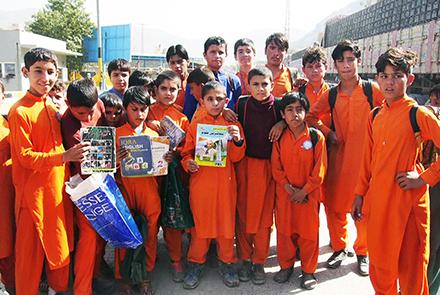Residents who live near the Torkham crossing in the eastern province of Nangarhar, along the Durand Line, on Sunday once again called on the Afghan government to establish schools in the area for their children.
They said the lack of schools in their villages force them to send their children to school across the Durand Line in Pakistan.
The education department of the Ministry of Education (MoE) has confirmed that there is an issue and pledged to take steps towards finding a solution to the problem as soon as possible.
“One of the big problems for children in Torkham is that they do not have any schools. But this year, a school in Torkham was decided on, but there is still no building. We are trying to get the approval for the construction of a school that will have 60 classrooms,” said Haseebullah Shinwarai, head of Nangarhar education department.
School children living in the Torkham area walk across the de facto border every day to get to school and back.
One student, Faridullah, said: “We study Pakistani books, they are in Pashto; history and all other books are Pakistani.”
They also said they had to sing the Pakistani national anthem at school instead of their own country’s anthem.
Another student, Kashmir, said that in total there are between three and four hundred children who go to Pakistani schools.
“We are about three to four hundred students, we learn their Pakistani history,” said Kashmir.
“We have to learn our Afghan history, we have nothing to do with Pakistani history, we are going there for school, because here in our own area, we do not have schools,” said another student, Navid.
USAID has said that decades of conflict has devastated Afghanistan’s education systems and institutions.
In 2002, only an estimated one million children, mostly boys, attended school, while women and girls were almost completely excluded from educational opportunities. Since then, the Afghan government, USAID, and international donors have worked together to rebuild Afghanistan’s education sector.
USAID has trained thousands of primary and secondary school teachers, produced and distributed tens of millions of textbooks, helped thousands of Afghan girls and boys in remote provinces attend community-based education classes, and supported the Afghan government to design the systems and infrastructure in order to administer a nationwide education system.
Today, due to the efforts of USAID, other international donors, and the Afghan government, more than 9.2 million children are enrolled in school of which 39 percent are girls, according to the Afghan Ministry of Education.


